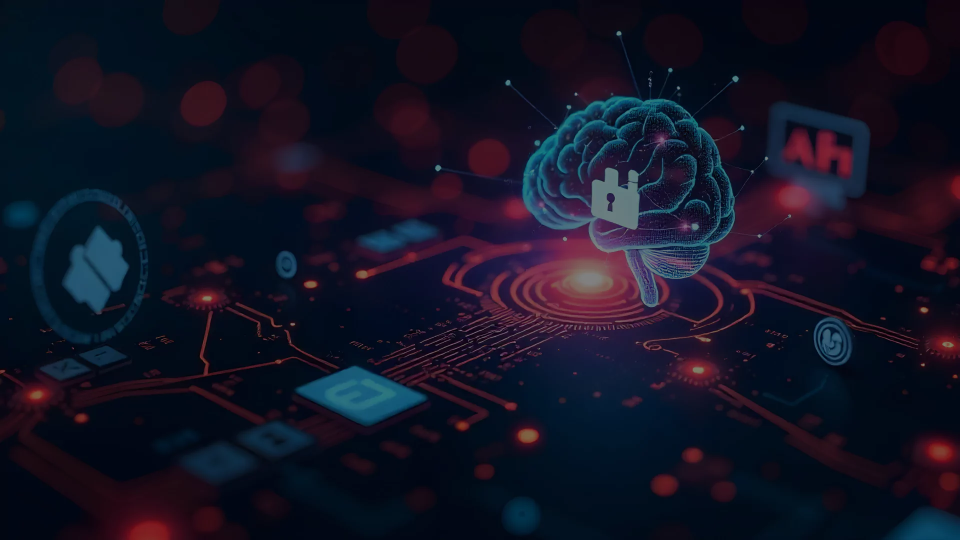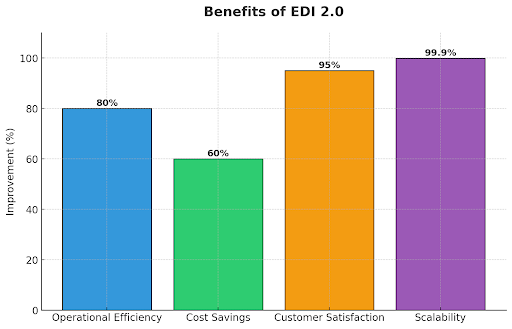
In today’s fast-paced, hyper-connected business environment, traditional electronic data interchange (EDI) systems are struggling to keep up. Organizations face mounting pressure to exchange data faster, onboard partners seamlessly, and gain real-time visibility across global supply chains. Yet, legacy systems—built on decades-old standards—remain rigid, expensive, and slow.
Enter EDI 2.0: a powerful blend of AI-powered EDI integration and API-driven B2B integration designed to overcome these limitations. By combining automation, intelligence, and flexibility, modern EDI solutions offer businesses the agility to thrive in an era where speed, accuracy, and scalability are non-negotiable.
This blog explores how next-generation EDI systems are transforming business operations, what technologies power them, and how companies can implement EDI modernization strategies without disrupting current operations.
The Shortcomings of Traditional EDI
Traditional EDI was revolutionary in its time, but its limitations are now impossible to ignore:
- High costs: Infrastructure, licensing, and specialized expertise push annual EDI expenses well beyond half a million dollars for large enterprises.
- Inflexibility: Rigid standards like X12 and EDIFACT restrict innovation and struggle with global compatibility.
- Slow processing: Batch-oriented processing delays visibility, creating bottlenecks in logistics and supply chain operations.
- Complex onboarding: Partner integration often takes months, with costly certifications and endless testing cycles.

For organizations seeking agility and competitive edge, legacy systems have become roadblocks. This is where EDI 2.0 shines.
How AI is Revolutionizing EDI
The integration of artificial intelligence transforms static systems into adaptive, intelligent frameworks. With EDI automation with AI, companies move from manual, error-prone processes to dynamic, self-learning systems.
Intelligent Data Mapping EDI
Traditionally, data mapping meant weeks of manual configuration. With machine learning for EDI, systems recognize patterns, relationships, and context automatically. Whether it’s understanding that “Item Description” equals “Product Name” or recognizing different date formats, AI-powered EDI integration drastically reduces errors and speeds up partner onboarding.
Predictive Analytics in EDI
Business leaders no longer have to react to problems—they can prevent them. Predictive analytics in EDI leverages historical transaction data to forecast demand, identify supplier risks, and spot anomalies in real time. Imagine knowing a supplier is likely to delay deliveries before it happens—AI makes this possible.
Automated Error Detection
Instead of discovering issues hours after batch processing, EDI 2.0 systems detect and often resolve errors instantly. Duplicate detection, smart exception handling, and self-healing mechanisms ensure fewer disruptions and higher accuracy.
Why APIs are the Backbone of Modern Integration
If AI makes EDI smarter, APIs make it faster and more flexible. EDI and API connectivity bridges gaps that legacy systems cannot, enabling true real-time EDI data exchange.
Seamless Real-Time Data Exchange
With APIs, order confirmations, shipping updates, and payment verifications happen instantly—no waiting for batch windows. This transforms customer experience and digital supply chain integration, allowing managers to act on live information instead of outdated reports.
API-Based EDI Onboarding
Bringing new partners into the network is no longer a months-long ordeal. With API-based EDI onboarding, partners can connect in days using standard documentation and testing tools. This is particularly game-changing for small and mid-sized businesses, who can now join digital supply chains without prohibitive costs.
Reduced Costs and Complexity
By leveraging standards like JSON and REST, API-driven B2B integration eliminates expensive VAN charges, middleware layers, and custom coding. The result? Dramatic cost reduction with EDI 2.0 while enabling scalability for growing operations.
Key Technologies Powering EDI 2.0
Behind the evolution of modern EDI solutions are several disruptive technologies:
- Machine Learning for EDI: Enables smarter mapping, forecasting, and anomaly detection.
- Cloud-Based EDI Platforms: Offer elastic scalability, global connectivity, and multi-protocol support, making integration accessible to businesses of all sizes.
- Blockchain EDI Security: Provides immutable records, tamper-proof audit trails, and trustless verification between partners. Smart contracts even automate payments based on delivery confirmations.
Together, these tools ensure that next-generation EDI systems are not just efficient, but also secure, scalable, and future-ready.
Implementation: Smart EDI Modernization Strategies
Transitioning to EDI 2.0 doesn’t mean ripping out your existing infrastructure overnight. Instead, organizations succeed by following structured EDI modernization strategies:
Gradual Migration: Run legacy and new systems in parallel, phasing migration by transaction type.
Partner Ecosystem Readiness: Segment partners by technical maturity and create tiered onboarding approaches.
Data Governance: Establish robust data quality frameworks—because AI amplifies both good and bad data.
Performance Monitoring: Use predictive analytics to flag potential issues before they disrupt operations.
Security First: Adopt zero-trust security, adversarial testing for AI, and compliance-ready audit trails.
By taking this phased, risk-mitigated approach, businesses can modernize without disrupting critical workflows.
Measuring Success: The ROI of EDI 2.0
The business case for EDI 2.0 is compelling. Organizations report:
- Operational efficiency: 70–85% faster processing, 90% fewer data errors, and up to 80% higher automation rates.
- Cost savings: 40–60% reduction in infrastructure costs, 50–70% reduction in IT support labor, and lower per-transaction fees.
- Customer satisfaction: 95–99% order accuracy, faster query resolution, and 15–25% higher retention rates.
- Scalability: Partner onboarding time reduced from weeks to days, with uptime levels as high as 99.9% thanks to cloud-based EDI platforms.

In other words, businesses gain efficiency, save money, and improve customer and partner relationships simultaneously.
The Future of Electronic Data Interchange
The future of electronic data interchange lies in intelligent, adaptive, and interconnected systems. Businesses adopting digital supply chain integration are already reaping the rewards: faster response times, lower costs, and stronger partner ecosystems.
By embracing smart business integration with AI, companies transform EDI from a cost center into a competitive advantage. With blockchain EDI security, real-time EDI data exchange, and cloud-based EDI platforms, the next decade will see integration evolve from rigid compliance into agile innovation.
Final Thoughts
Outdated EDI systems are holding businesses back with their complexity, expense, and lack of flexibility. EDI 2.0 represents a paradigm shift—combining AI intelligence with API connectivity to deliver systems that scale with business needs, improve accuracy, and reduce costs.
Forward-thinking organizations are already making the shift. By starting small, focusing on high-impact areas, and involving trading partners early, companies can achieve seamless modernization.
At ESSPL, our EDI solutions are designed with this future in mind. Leveraging AI-powered EDI integration, cloud-based EDI platforms, and API-driven B2B integration, we help enterprises transition smoothly from legacy systems to next-generation EDI systems. Our approach focuses on faster partner onboarding, reduced transaction costs, and enhanced supply chain visibility—tailored to your industry needs. Whether it’s EDI for logistics and supply chain, blockchain EDI security, or scalable global connectivity, ESSPL ensures your business is future-ready with truly modern EDI solutions.
The winners in tomorrow’s marketplace will be those who adopt next-generation EDI systems today—building agile, intelligent, and secure networks that thrive in the digital economy.


